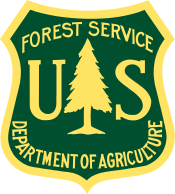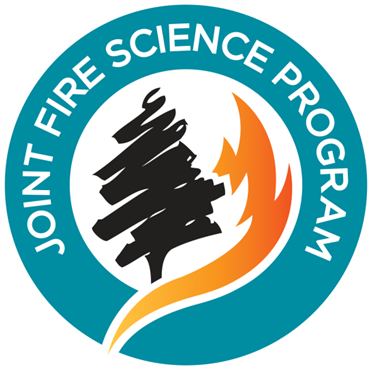Partner Feeds
8/2/2022 Windigo Fire Update (Windigo Fire Wildfire)
Stayman Flats Fire Update - July 22, 2022 (Final Update) (Stayman Wildfire)
Stayman Flats Fire Update - July 20, 2021 9:00 a.m. (Stayman Wildfire)
Newly-published DNR study finds declining eelgrass in San Juan Islands
Eelgrass in the San Juan Islands is declining, according to a newly-published DNR report and story map, prompting concern for the health of one of Washington’s most diverse and pristine marine areas.
Widespread local declines
Based on a random sample, DNR documented 4 times more sites with long-term declines than increases in eelgrass cover in the San Juan Islands over the last 2 decades. In recent years, eelgrass losses have been even more pronounced. One third of all eelgrass beds sampled near the San Juan Islands between 2015 and 2020 showed signs of declines, and there were no increases. Additional sites sampled as part of targeted studies confirm this pattern. The long-term losses in the San Juan Islands contrast starkly with monitoring results from the rest of greater Puget Sound, where long-term site trends are more balanced between increases and declines.
Trends in eelgrass area at randomly selected sites in the San Juan Islands and Cypress Island. Losses, shown in red, greatly outnumber gains. Long-term trends span the period between 2000 and 2020, short term trends are based on data collected between 2015 and 2020.Eelgrass losses occurred in a wide variety of habitat types, spread throughout the San Juan Islands. Spatial patterns of loss varied at sites; along the shallow edge, the deep edge or throughout the entire eelgrass bed. The timing of losses also varied among sites. At some sites, eelgrass was lost relatively early in the monitoring period, while at other sites declines occurred later on.
Change in eelgrass area at all sites sampled in the San Juan Islands, both on longer term (left) or in recent years (right).Potential Causes
The pattern of eelgrass declines in the San Juan Islands is surprising because this location is often seen as one of the pristine areas within greater Puget Sound. While we are not sure what caused these declines, there are some indications to what may have happened.
One potential stressor is eelgrass wasting disease. This disease causes dark lesions on the leaves, and lowers how much carbon is stored in the rhizomes of the plants, which limits plant growth and survival. Dr. Drew Harvell and other researchers from the University of Washington’s Friday Harbor Laboratories have found high levels of eelgrass wasting disease near the San Juan Islands. After the 2015-2016 marine heat wave, an increase in prevalence and severity of disease coincided with declines in eelgrass shoot density at their study sites.
Losses could be due in part to human activities. DNR documented declines at several embayments that are popular destinations for recreation. Eelgrass can be damaged through trampling, anchoring, prop scars or water quality degradation. Recent efforts by local resource managers to create voluntary no-anchor zones in sensitive embayments may reduce some of the impact on eelgrass at these locations.
Environmental conditions could have exacerbated the loss of eelgrass in recent years. Puget Sound experienced two marine heat waves in 2015-16 and 2019. Warmer water temperatures can change the metabolic balance in seagrasses, increasing their light requirements. This could have contributed to loss inside embayments, which are often warmer than the surrounding waters.
Ongoing decline of eelgrass in Shallow Bay on Sucia Island. The map on the left shows transects sampled in 2016 and 2019. Blue colors indicate where eelgrass was present in both years, red indicates where it was lost. The plot on the right shows the decline in eelgrass area over time at this location.Eelgrass in greater Puget Sound
Eelgrass meadows grow along many of Washington State’s shorelines, where they provide essential food, nursery and shelter for a rich community of animals, including forage fish, Dungeness crab, and salmon. In addition to providing critical habitat, these meadows are a good indicator of the health of Puget Sound.
Since 2000, DNR has monitored eelgrass populations in greater Puget Sound as part of its stewardship responsibilities. Every year, a research vessel collects hundreds of hours of underwater footage at sites throughout the region to see how eelgrass meadows are changing. This footage is scored at one second intervals for presence of eelgrass, and combined with location and depth data to estimate how much eelgrass was present at each of these sites. Over time, this dataset has grown to almost 40,000 transects, spread over 867 sites in greater Puget Sound. A subset of 214 randomly selected sites is sampled regularly to assess regional changes in eelgrass area. Other sites were visited as part of targeted studies, often in collaboration with local governments and Tribes.
Monitoring results are used to calculate soundwide eelgrass area, which is one of the indicators for the health of nearshore ecosystems by the Puget Sound Partnership. Soundwide eelgrass area has remained relatively stable between 2000 and 2020. This suggests that eelgrass populations in greater Puget Sound are in good condition.
Eelgrass beds are dynamic on smaller spatial scales, and often change in response to local and regional stressors. Some changes are likely due to human activities, while others are driven by natural processes. One dramatic example is the recent decline in Skagit Bay. In recent years, the North Fork of the Skagit River diverted from its established channel, and formed a major new outflow channel into the bay. The new channel is progressively eroding a large eelgrass bed in the center of the bay, causing a loss of more than 200 hectares since 2004.
Eelgrass beds provide habitat for Dungeness crabs and many other animals.DNR will further explore losses in the San Juans and compare results to other areas
DNR’s findings raise a red flag – widespread eelgrass losses have occurred in the San Juan Islands, raising concerns about both the causes of decline and the ramifications for species that rely on this critical habitat. The study also reports good news – soundwide eelgrass area did not change significantly between 2000 and 2020. To further explore these findings, DNR is seeking to expand its surveys in the San Juan Islands. DNR will also continue to monitor eelgrass throughout greater Puget Sound in order to track this critical resource.
For more information: see our story map or download the report
Newly-published DNR study finds declining eelgrass in San Juan Islands
Eelgrass in the San Juan Islands is declining, according to a newly-published DNR report and story map, prompting concern for the health of one of Washington’s most diverse and pristine marine areas.
Widespread local declines
Based on a random sample, DNR documented 4 times more sites with long-term declines than increases in eelgrass cover in the San Juan Islands over the last 2 decades. In recent years, eelgrass losses have been even more pronounced. One third of all eelgrass beds sampled near the San Juan Islands between 2015 and 2020 showed signs of declines, and there were no increases. Additional sites sampled as part of targeted studies confirm this pattern. The long-term losses in the San Juan Islands contrast starkly with monitoring results from the rest of greater Puget Sound, where long-term site trends are more balanced between increases and declines.
Trends in eelgrass area at randomly selected sites in the San Juan Islands and Cypress Island. Losses, shown in red, greatly outnumber gains. Long-term trends span the period between 2000 and 2020, short term trends are based on data collected between 2015 and 2020.Eelgrass losses occurred in a wide variety of habitat types, spread throughout the San Juan Islands. Spatial patterns of loss varied at sites; along the shallow edge, the deep edge or throughout the entire eelgrass bed. The timing of losses also varied among sites. At some sites, eelgrass was lost relatively early in the monitoring period, while at other sites declines occurred later on.
Change in eelgrass area at all sites sampled in the San Juan Islands, both on longer term (left) or in recent years (right).Potential Causes
The pattern of eelgrass declines in the San Juan Islands is surprising because this location is often seen as one of the pristine areas within greater Puget Sound. While we are not sure what caused these declines, there are some indications to what may have happened.
One potential stressor is eelgrass wasting disease. This disease causes dark lesions on the leaves, and lowers how much carbon is stored in the rhizomes of the plants, which limits plant growth and survival. Dr. Drew Harvell and other researchers from the University of Washington’s Friday Harbor Laboratories have found high levels of eelgrass wasting disease near the San Juan Islands. After the 2015-2016 marine heat wave, an increase in prevalence and severity of disease coincided with declines in eelgrass shoot density at their study sites.
Losses could be due in part to human activities. DNR documented declines at several embayments that are popular destinations for recreation. Eelgrass can be damaged through trampling, anchoring, prop scars or water quality degradation. Recent efforts by local resource managers to create voluntary no-anchor zones in sensitive embayments may reduce some of the impact on eelgrass at these locations.
Environmental conditions could have exacerbated the loss of eelgrass in recent years. Puget Sound experienced two marine heat waves in 2015-16 and 2019. Warmer water temperatures can change the metabolic balance in seagrasses, increasing their light requirements. This could have contributed to loss inside embayments, which are often warmer than the surrounding waters.
Ongoing decline of eelgrass in Shallow Bay on Sucia Island. The map on the left shows transects sampled in 2016 and 2019. Blue colors indicate where eelgrass was present in both years, red indicates where it was lost. The plot on the right shows the decline in eelgrass area over time at this location.Eelgrass in greater Puget Sound
Eelgrass meadows grow along many of Washington State’s shorelines, where they provide essential food, nursery and shelter for a rich community of animals, including forage fish, Dungeness crab, and salmon. In addition to providing critical habitat, these meadows are a good indicator of the health of Puget Sound.
Since 2000, DNR has monitored eelgrass populations in greater Puget Sound as part of its stewardship responsibilities. Every year, a research vessel collects hundreds of hours of underwater footage at sites throughout the region to see how eelgrass meadows are changing. This footage is scored at one second intervals for presence of eelgrass, and combined with location and depth data to estimate how much eelgrass was present at each of these sites. Over time, this dataset has grown to almost 40,000 transects, spread over 867 sites in greater Puget Sound. A subset of 214 randomly selected sites is sampled regularly to assess regional changes in eelgrass area. Other sites were visited as part of targeted studies, often in collaboration with local governments and Tribes.
Monitoring results are used to calculate soundwide eelgrass area, which is one of the indicators for the health of nearshore ecosystems by the Puget Sound Partnership. Soundwide eelgrass area has remained relatively stable between 2000 and 2020. This suggests that eelgrass populations in greater Puget Sound are in good condition.
Eelgrass beds are dynamic on smaller spatial scales, and often change in response to local and regional stressors. Some changes are likely due to human activities, while others are driven by natural processes. One dramatic example is the recent decline in Skagit Bay. In recent years, the North Fork of the Skagit River diverted from its established channel, and formed a major new outflow channel into the bay. The new channel is progressively eroding a large eelgrass bed in the center of the bay, causing a loss of more than 200 hectares since 2004.
Eelgrass beds provide habitat for Dungeness crabs and many other animals.DNR will further explore losses in the San Juans and compare results to other areas
DNR’s findings raise a red flag – widespread eelgrass losses have occurred in the San Juan Islands, raising concerns about both the causes of decline and the ramifications for species that rely on this critical habitat. The study also reports good news – soundwide eelgrass area did not change significantly between 2000 and 2020. To further explore these findings, DNR is seeking to expand its surveys in the San Juan Islands. DNR will also continue to monitor eelgrass throughout greater Puget Sound in order to track this critical resource.
For more information: see our story map or download the report
Cub Creek Fire Closure Order updated 11-30-2021 (Cub Creek 2 Fire Wildfire)
Cedar Creek, Varden, and Delancy Fires Updated Closure Order 11-30-2021 (Cedar Creek Wildfire)
11.30.2021 News Release: Prescribed Fire Operations Update (Prescribed Fire Projects 2021 Prescribed Fire)
11.19.2021: News Release: Prescribed Fire Operations (Prescribed Fire Projects 2021 Prescribed Fire)
Want to Start Bouldering on DNR Land? These Five Tips Will Help
With the arrival of fall, many Washington climbers curse the rain that settles over the crags west of the Cascade Crest — but good climbing can still be had on the odd dry day or two. The cooler temperatures and beautiful autumn foliage make for good friction and a scenic day out.
If you’re looking to sneak in some days on the rock this fall and winter, there are many places to climb on DNR land, including some of the best bouldering western Washington has to offer.
The basicsFor those who are brand new to climbing, first things first: what the heck is bouldering, anyway?
Bouldering is a distinct form of climbing. Boulderers don’t use a rope, relying on crash pads to break their falls, and they climb large boulders (shocking, I know) instead of cliffs. Most routes — which boulderers call “problems” — are between 10 and 20 feet high.
Every boulder problem has a rating that tells you how difficult it is. In North America, the most common rating system is the V scale, which gets its name from boulderer John Sherman, one of the people who created the scale in the 1980s. Sherman’s friends nicknamed him “Vermin,” and the moniker was immortalized as the “V” that comes before each number grade on the scale. This scale starts at VB (for beginner), then goes from V0 to V17 — the grade for what is currently the hardest problem in the world.
Bouldering is one of the fastest growing styles of climbing, and if you’re just getting into bouldering outdoors, these five simple tips should help you enjoy a fun and safe day out.
1) Know before you goDoing a little bit of research before going to a new area will save you from many potential headaches.
Know where to park your vehicle and how to access the boulders, and download a map of the area before you leave home. The Avenza app gives you offline access to maps of DNR land, and the Mountain Project app can provide information on specific boulder problems.
It’s also worth doing some googling to see if where you’re going has cell reception, but when in doubt, it’s safer to assume you won’t have service. Not being able to find the crag because you didn’t do enough research and have no reception to figure out where to go is a real bummer (ask me how I know).
If you’re new to bouldering outdoors, consider going with someone more experienced who can give you pointers on things like pad placement, spotting, how to move on the rock and how to fall safely. There are also many classes and climb nights out there (including programs that are geared towards women and people of color) if you don’t know anyone who could mentor you.
2) Be preparedWhile bouldering is one of the most casual kinds of climbing you can do outdoors, you should still be prepared in case things don’t go to plan.
Always bring the 10 essentials and anything else you would pack for a day in the woods.
One vital essential is a first-aid kit and knowing how to use it. Lower limb injuries are the most common way boulderers get hurt, so at the very least it’s a good idea to have the materials and knowledge to deal with a sprained ankle or broken bone.
Tell someone where you’re going and what time you’ll be back so first responders can find you more easily if you have an accident and aren’t able to call for help (a personal locator beacon like an InReach can let you get in touch with authorities in areas with no service).
The 10 essentials will prepare you well for any outdoor activity. 3) Boulder with a buddySome problems require a spotter — someone who can help direct your body to a crash pad — to keep you from hitting a rock or anything else that’d hurt to fall on.
Other problems might require multiple crash pads for a safe landing. When you go out with partners, everyone can bring one to create bigger landing zones.
Partners can also call for help, give you first aid if you’re injured and help you get back to your vehicle or the hospital if you need it. Plus, unless they’re total jerks, spending the day outside with your friends is just plain fun.
Bouldering with a buddy keeps you safe and having fun. 4) Climb with the conditions you findNo one likes having their plans rained out, but given that we live in the Pacific Northwest, you can probably guess what I’m going to say next.
Keep an eye on the forecast and remember that the rock can take time to dry out after a storm. Many boulders are in wooded areas, and the lack of direct sunlight combined with dripping trees can keep things slippery well after the rain has stopped falling.
Overhanging problems may have stayed dry, but if the rock is still damp, use your best judgement in deciding whether to climb or not. Sometimes it’s just too slippery for bouldering to be fun or safe, so it’s good to have some nearby backup activities in mind so you can still enjoy a day outdoors.
5) Minimize your impactAs with any outdoor activity, take care to respect the land and other people’s ability to recreate on it.
Familiarize yourself with the Leave No Trace principles if you haven’t already, keep to established trails, and pack out everything you pack in. Be aware of where you park so you’re not blocking roads or gates.
With the increasing popularity of climbing, more and more people are getting outside, so expect to make some new friends, especially on a nice day. Many bouldering areas are also near other outdoor recreation opportunities, and being courteous with other land users will go a long way toward improving everyone’s experiences.
Remember to pack out all your trash. Get out thereIf you like to climb, bouldering can be a great way to take advantage of some dry weather during the fall and winter, and with the right know-how, you can be confident that you’ll enjoy a great day out on the rock.
Want to Start Bouldering on DNR Land? These Five Tips Will Help
With the arrival of fall, many Washington climbers curse the rain that settles over the crags west of the Cascade Crest — but good climbing can still be had on the odd dry day or two. The cooler temperatures and beautiful autumn foliage make for good friction and a scenic day out.
If you’re looking to sneak in some days on the rock this fall and winter, there are many places to climb on DNR land, including some of the best bouldering western Washington has to offer.
The basicsFor those who are brand new to climbing, first things first: what the heck is bouldering, anyway?
Bouldering is a distinct form of climbing. Boulderers don’t use a rope, relying on crash pads to break their falls, and they climb large boulders (shocking, I know) instead of cliffs. Most routes — which boulderers call “problems” — are between 10 and 20 feet high.
Every boulder problem has a rating that tells you how difficult it is. In North America, the most common rating system is the V scale, which gets its name from boulderer John Sherman, one of the people who created the scale in the 1980s. Sherman’s friends nicknamed him “Vermin,” and the moniker was immortalized as the “V” that comes before each number grade on the scale. This scale starts at VB (for beginner), then goes from V0 to V17 — the grade for what is currently the hardest problem in the world.
Bouldering is one of the fastest growing styles of climbing, and if you’re just getting into bouldering outdoors, these five simple tips should help you enjoy a fun and safe day out.
1) Know before you goDoing a little bit of research before going to a new area will save you from many potential headaches.
Know where to park your vehicle and how to access the boulders, and download a map of the area before you leave home. The Avenza app gives you offline access to maps of DNR land, and the Mountain Project app can provide information on specific boulder problems.
It’s also worth doing some googling to see if where you’re going has cell reception, but when in doubt, it’s safer to assume you won’t have service. Not being able to find the crag because you didn’t do enough research and have no reception to figure out where to go is a real bummer (ask me how I know).
If you’re new to bouldering outdoors, consider going with someone more experienced who can give you pointers on things like pad placement, spotting, how to move on the rock and how to fall safely. There are also many classes and climb nights out there (including programs that are geared towards women and people of color) if you don’t know anyone who could mentor you.
2) Be preparedWhile bouldering is one of the most casual kinds of climbing you can do outdoors, you should still be prepared in case things don’t go to plan.
Always bring the 10 essentials and anything else you would pack for a day in the woods.
One vital essential is a first-aid kit and knowing how to use it. Lower limb injuries are the most common way boulderers get hurt, so at the very least it’s a good idea to have the materials and knowledge to deal with a sprained ankle or broken bone.
Tell someone where you’re going and what time you’ll be back so first responders can find you more easily if you have an accident and aren’t able to call for help (a personal locator beacon like an InReach can let you get in touch with authorities in areas with no service).
The 10 essentials will prepare you well for any outdoor activity. 3) Boulder with a buddySome problems require a spotter — someone who can help direct your body to a crash pad — to keep you from hitting a rock or anything else that’d hurt to fall on.
Other problems might require multiple crash pads for a safe landing. When you go out with partners, everyone can bring one to create bigger landing zones.
Partners can also call for help, give you first aid if you’re injured and help you get back to your vehicle or the hospital if you need it. Plus, unless they’re total jerks, spending the day outside with your friends is just plain fun.
Bouldering with a buddy keeps you safe and having fun. 4) Climb with the conditions you findNo one likes having their plans rained out, but given that we live in the Pacific Northwest, you can probably guess what I’m going to say next.
Keep an eye on the forecast and remember that the rock can take time to dry out after a storm. Many boulders are in wooded areas, and the lack of direct sunlight combined with dripping trees can keep things slippery well after the rain has stopped falling.
Overhanging problems may have stayed dry, but if the rock is still damp, use your best judgement in deciding whether to climb or not. Sometimes it’s just too slippery for bouldering to be fun or safe, so it’s good to have some nearby backup activities in mind so you can still enjoy a day outdoors.
5) Minimize your impactAs with any outdoor activity, take care to respect the land and other people’s ability to recreate on it.
Familiarize yourself with the Leave No Trace principles if you haven’t already, keep to established trails, and pack out everything you pack in. Be aware of where you park so you’re not blocking roads or gates.
With the increasing popularity of climbing, more and more people are getting outside, so expect to make some new friends, especially on a nice day. Many bouldering areas are also near other outdoor recreation opportunities, and being courteous with other land users will go a long way toward improving everyone’s experiences.
Remember to pack out all your trash. Get out thereIf you like to climb, bouldering can be a great way to take advantage of some dry weather during the fall and winter, and with the right know-how, you can be confident that you’ll enjoy a great day out on the rock.




